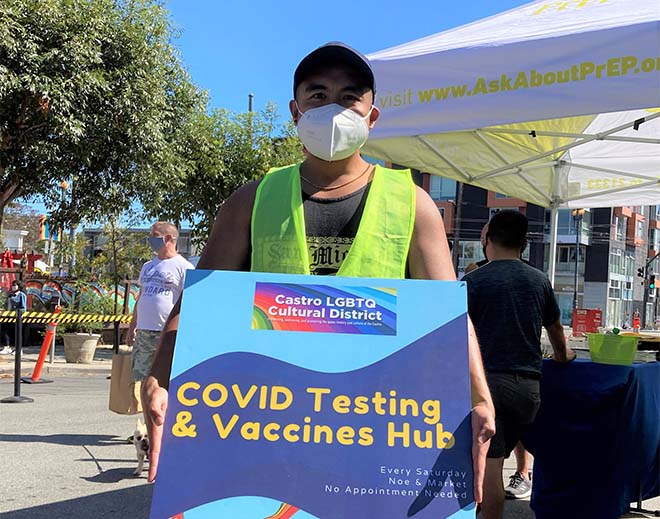
Empowering community through design is at the heart of TEF’s purpose, but a number of the firm’s staff also contribute to the community as individuals by volunteering. We invited Mrunalini Kulkarni, O.J. Monegas, and Glynis Nakahara to talk about their community passions, what drew them to volunteer, and how it relates to and informs their work at the firm.
Q: What kinds of community engagement have you been involved in?
Mrunalini Kulkarni: My most recent community activity was volunteering for the Alameda County Food Bank. For me, it all started when I was in New York, where I began volunteering for Architecture for Humanity as a way to socialize and make connections with other professionals. I realized how much of an impact we were making. We worked with people who really needed change. So when I moved to the Bay Area, I started volunteering for Habitat for Humanity on the Habitat Terrace project, 28 townhouses in San Francisco’s Oceanview neighborhood. I led the volunteers, introducing them to the different components of the houses and how to build them. Then I started engaging with the Alameda County Food Bank and also help out sorting groceries for seniors at Glide Memorial Church.
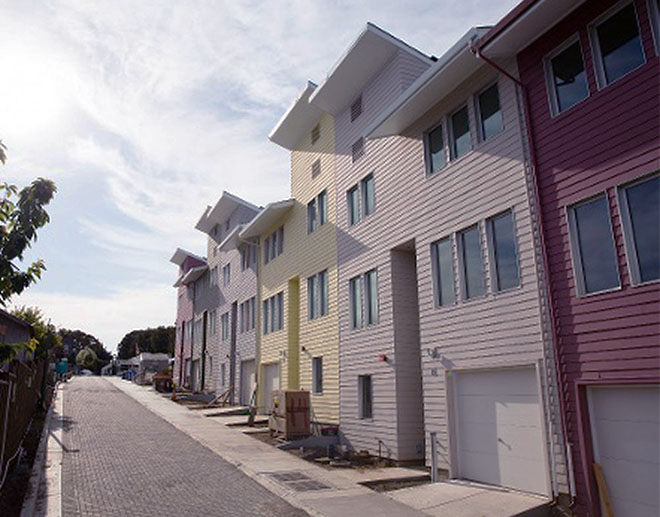 Habitat for Humanity’s Habitat Terrace in San Francisco’s Oceanview neighborhood comprises 28 affordable, two and three bedroom single family homes
Habitat for Humanity’s Habitat Terrace in San Francisco’s Oceanview neighborhood comprises 28 affordable, two and three bedroom single family homes
O.J. Monegas: I just got back from riding in the AIDS/LifeCycle, from San Francisco to Los Angeles. That was the last seven days, but I’ve been training since November. Each of us had to fundraise $3,500 to participate, and everyone on my team surpassed that, raising $5,000. And TEF’s principals matched every dollar that a TEF staff member raised. We sold homemade bagels and sold plants outside of Noe Street Café a few Saturdays this spring. Before that, I’ve helped out with Covid-19 screening and vaccination events held by the Castro LGBTQ Cultural District and been part of urban design charrettes for the SOMA Pilipinas Filipino Heritage District.
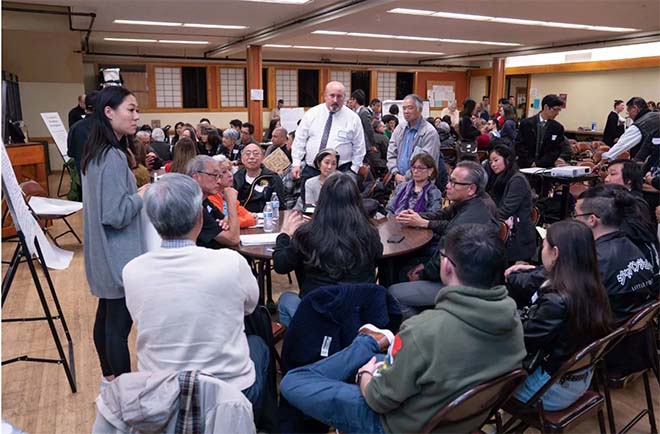
Community town hall meeting for the Japantown Cultural District
Glynis Nakahara: I’ve been involved in community organizing in Japantownfor the past 15 years, most consistently with the Japantown Task Force (JTF), which is a nonprofit organization focused on cultural preservation and community development. When I started, the Better Neighborhoods Plan (BNP) had just gotten underway. I was part of a core stakeholder group supporting the Planning Department with community engagement. Interestingly, the BNP lost community support at the eleventh hour when the final draft was not fully vetted with the community. But its loss led to the subsequent development of the Japantown Community, Cultural Heritage, and Economic Sustainability Strategy (JCHESS), which essentially became the prototype for the city’s Cultural District Program. More recently I’ve been involved in developing Design Guidelines and am currently engaged in the renovation of the Peace Plaza and Osaka Way.
Q: What drives you to participate in community engagement outside of work?
Monegas: When I was in high school, my older siblings were really involved in Key Club, and so I joined too. It was a fun way to socialize, but we also committed to four hours of community service a month. The projects were fun, like holding a senior citizen prom, or trick or treating for canned food donations. It became a social thing that I continued in college. I got involved with Habitat for Humanity, and then I graduated during the recession, when there was no work. So I served in AmeriCorps. During my term I worked with Rebuilding Together, a non-profit which rehabilitates existing housing for people in need. For me, volunteering is a way to see what’s happening on the ground.
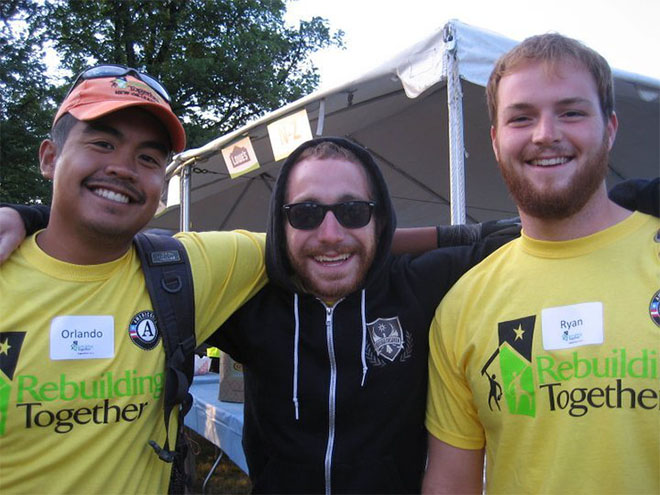
O.J. Monegas (left) and colleagues at Americorps / Rebuilding Together New Orleans
Kulkarni: I started volunteering to make professional contacts. Then the firm I worked at before TEF had volunteer opportunities that we would do together, which helped with team building. Also, it’s very important, if you have kids, to do community service. You can show the younger generation that helping people who are in need brings contentment and satisfaction. I hope my kids are also engaged in the community. And as a professional architect, I have all these skills I can share. With Architecture for Humanity, we interviewed residents about their vision for a long-neglected skate park under the Manhattan Bridge in New York. It was being used for trash, and the people in the neighborhood weren’t happy about that. We brought a whiteboard and asked them to draw ideas of what it could be, and then we invited design firms to submit proposals for how to activate the space. Then we got approvals from the city. So it was a way for us to contribute all the different skills we had developed as architects.
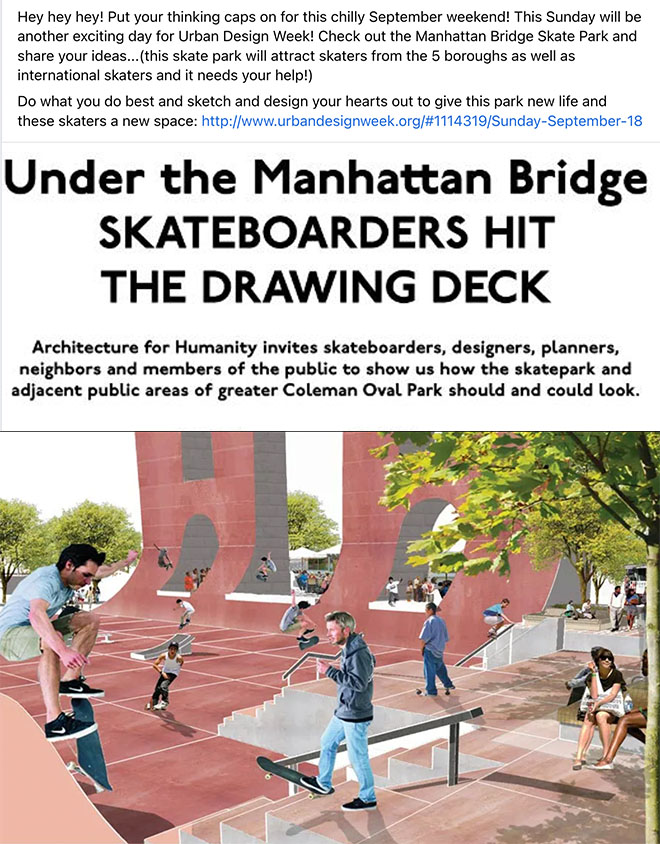
Architecture for Humanity’s call for community input (top) and rendering for the winning concept by HAO/Holm Architecture Office.
Nakahara: Earlier in my career, I joined the board of Kearny Street Workshop (KSW), one of the oldest Asian Pacific American Arts Organizations in San Francisco. Having come from outside the Bay Area, I had no family here, and although I had done some volunteering with the East Bay Asian Local Development Corporation (EBALDC) when I lived in Oakland, I was looking for more social connection in San Francisco, and a meaningful way to contribute my skills to something that would have an impact. When I think about it, much of my community organizing passions and relationships started at KSW. In fact, I met Richard Wada, the son of legendary Japantown community advocate Yori Wada, who was an advisory board member then, and he was the person who helped connect me to Japantown.
Q: How do your community engagement passions inform the work here at TEF, or vice versa?
Nakahara: It’s not intentional, but I do learn a lot about what’s going on in the city and how it works, especially from an economic and political perspective. Working so closely with people at a grassroots level has also cultivated awareness and cultural and community sensitivity in general and I’ve built relationships with city staff, which is helpful because the city is also one of our clients. I’ve also been able to connect my community and work: last year we helped design a prototype retail pop-up concept called Japantenna which will showcase Japanese specialties one prefecture at a time.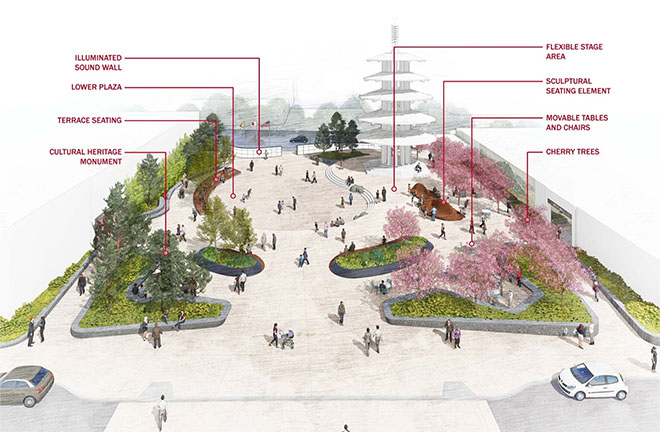
The concept for the renovation of the Japantown Peace Plaza was driven by robust community engagement in partnership with the Japantown Task Force
Monegas: One of the friends I made from my involvement with the Castro LGBTQ Cultural District recently penned letters to start a conversation with the new operator for the historic Castro Theatre. It’s a historic landmark, and he wanted to make sure that the new programming would be culturally sensitive to its longstanding role in the community. It’s people like him who help make San Francisco San Francisco, who are the culture bearers, and they do it on their own time. So when I’m volunteering, I’m getting to meet more people who care about helping maintain the city’s fabric. I feel like because of that, I walk with more purpose with TEF’s projects.
Kulkarni: I joined TEF six months ago. But prior to that I worked on a project for the City of San Francisco and we had meetings with the people who would actually be using it. Generally, on a new project, architects talk to the owners or leaders, but we don’t often get a chance to talk to the users of the space and benefit from that kind of connection. It’s very interesting to hear their needs. And I was able to make connections with city staff members as well.
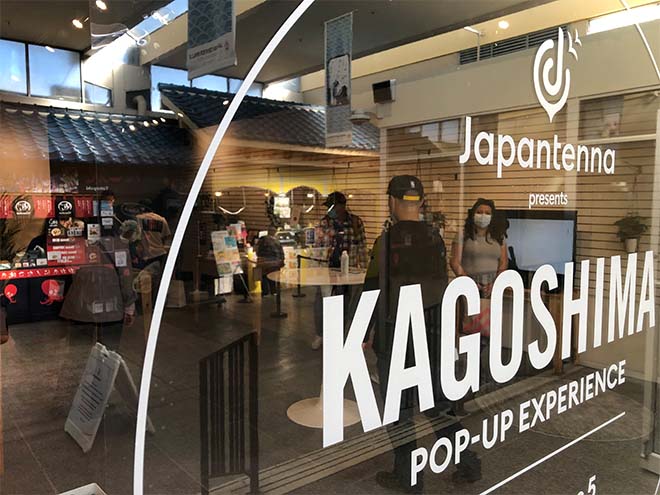
TEF designed the tenant build-out for the launch of a new retail concept in Japantown featuring authentic offerings from Kagoshima prefecture.
Q: How else does your volunteering relate to or influence your work with the firm?
Kulkarni: After being part of TEF for a while, I’ve noticed that everyone here listens, even the most senior architects. The first question that I was asked when I was interviewing to work here was, “Tell me about your volunteer experiences.” And I was so impressed, because the other firms were asking me, how many type five construction projects have you worked on? It made an impression on me, that they care about community engagement here.
Nakahara: While some architecture firms are engaged in pushing the design envelope, TEF’s ethos is rooted in community: we’re good at crafting solutions that integrate the social, economic, and political considerations of a project, both internally and externally, with care. Development in this region is highly complicated and I think we have the right alchemy of people, tools, and experience to design projects that actually get built. People in this office share the same values—they want to make a difference. And that’s reflected in the work we do in the community. Also, every year, we try to commit ourselves to one volunteer project as a firm.
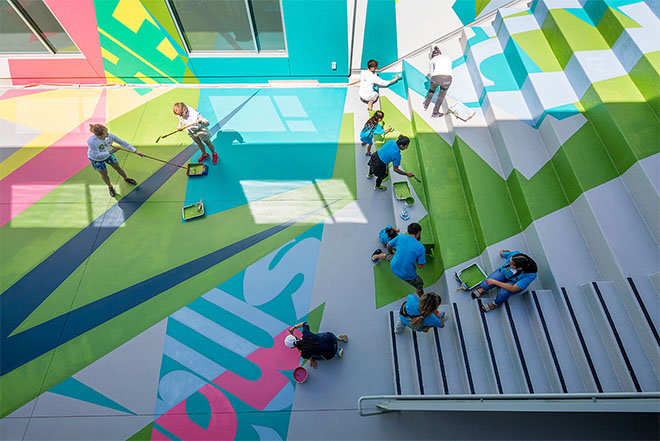
TEF collaborated with Project Color Corps and the Caliber ChangeMaker’s Academy to design and paint the interior courtyard of their newly-constructed school, an all staff volunteer project in 2019.